In 2007, the U.S. Senate passed a resolution officially declaring September as National Bourbon Heritage Month. This resolution came about largely in part of Kentucky’s annual Bourbon Festival, taking place this year from September 16th – 19th in Bardstown. To kick off National Bourbon Heritage month, we’ll reminisce on the history of bourbon and discuss everything you need to know about America’s oak-barreled refreshment.
A Brief History of America’s Native Spirit
The origins of bourbon are a hotly contested topic full of legend and myth. Some say the name originated from the House of Bourbon, a royal family from France. Others claim the name was inspired by Bourbon County in Kentucky or Bourbon Street in New Orleans, both named after the French dynasty.
What we do know for sure is bourbon has been produced in Kentucky since the 1800s and is celebrated to this day with their own Kentucky Bourbon Trail. The Bourbon Trail is a program created by the Kentucky Distillers’ Association (KDA). It helps consumers explore the birthplace of Bourbon with maps, events, distillery and craft tours, field guides, special gifts and more.
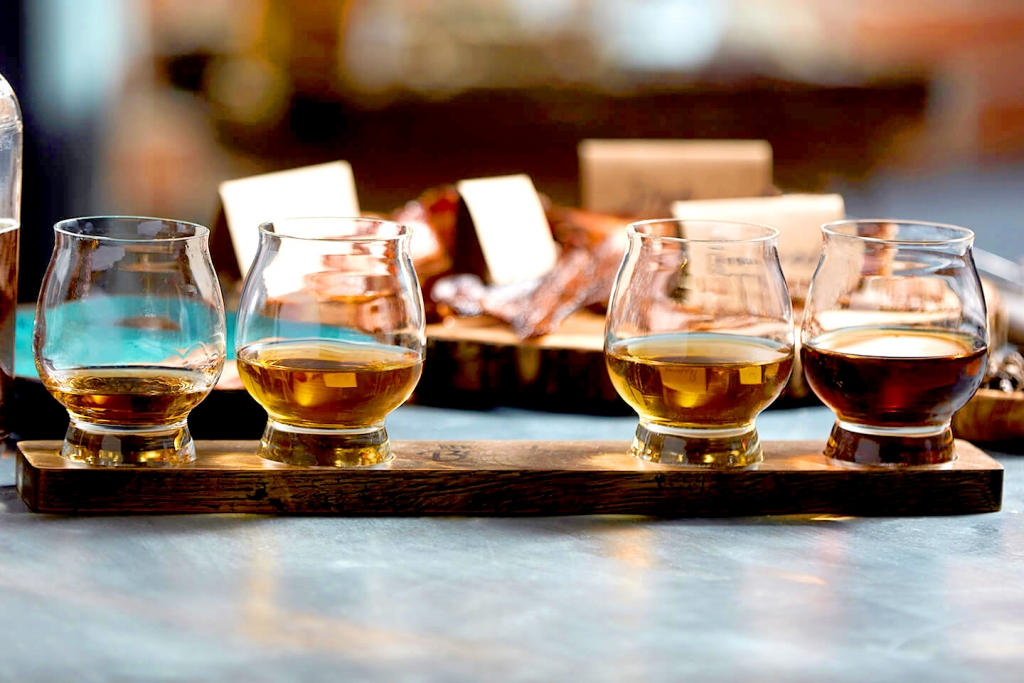
Bourbon Is Just Whiskey Made in Kentucky, Right?
To earn the title of “bourbon” a number of legal requirements must be met during production and labeling. For starters, the name “bourbon” is reserved for products made within the United States for the purpose of drinking within the United States. With the exception of Canada, bourbon that is exported to other countries are not required to meet these regulations.
The Federal Standards of Identity for Distilled Spirits made for US consumption includes the following rules for bourbon:
- The spirit must be produced either in the United States, Puerto Rico, or Washington DC.
- The mash (a mixture of fermentable grain) must include a minimum of 51% corn.
- Spirits must be aged in new, charred oak barrel.
- The bourbon is distilled to no more than 80% alcohol by volume or 160 proof.
- Spirits must enter the container for aging at no more than 62.5% alcohol by volume or 125 proof.
- Spirits must bottle at a minimum of 40% alcohol by volume or 80 proof.
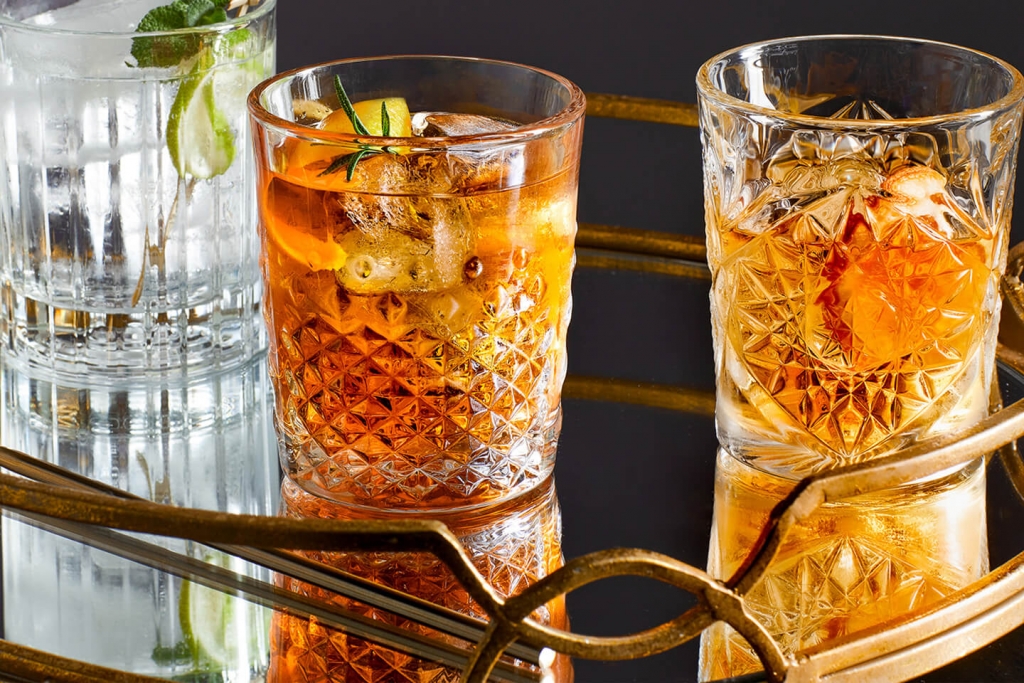
What’s the Difference Between Bourbon, Scotch, and Whiskey?
Bourbon and scotch are both types of whiskey. Although they fall under the same whiskey umbrella, they differ in the following ways.
Location: Scotch is made in Scotland, while bourbon is made in the United States. Although 95% of bourbon comes from Kentucky, it can legally be made in any state.
Grains: Bourbon is made from a majority mix of corn, while scotch is mainly composed of malted barley.
Taste: In general, bourbon has a sweeter flavor. Scotch tends to have more smokiness.
Production: As stated earlier, bourbon is aged in a new charred oak barrel that can only be used once. Scotch, on the other hand, can age in previously used oak barrels.
Aging: Bourbon has no minimum time it must legally age. Scotch, however, must be aged for a minimum of three years.
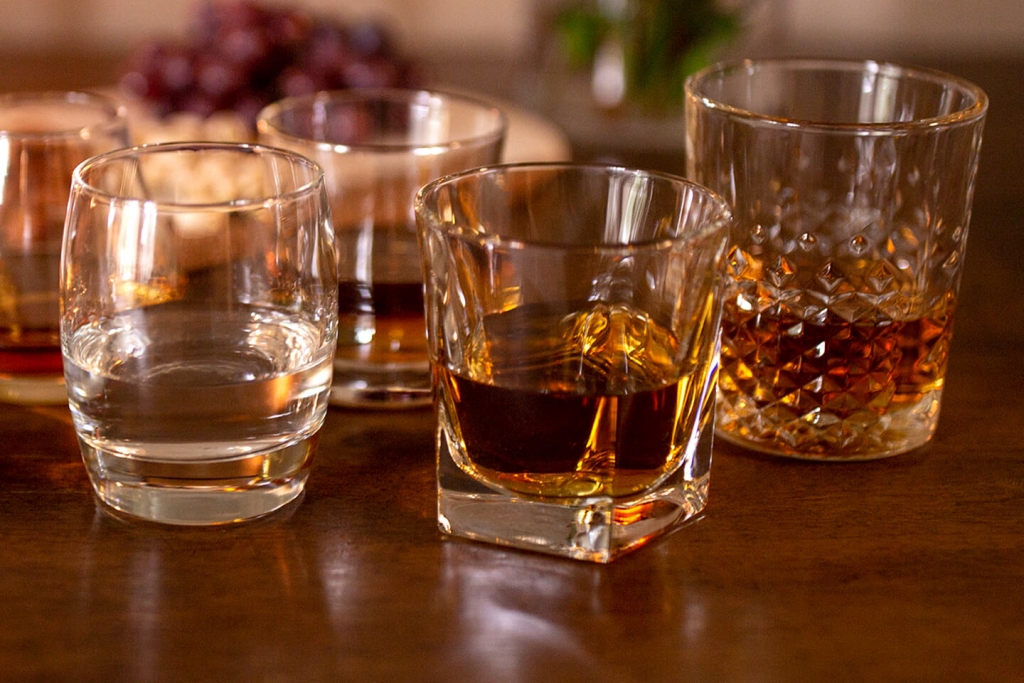
Categories of Bourbon
Depending on who you ask, there are generally six main categories of bourbon:
- High Corn
- High Rye
- Wheated/Wheaters
- Single Barrel
- Cask Strength
- Small Batch
High Corn
As we’ve established, bourbon must include a minimum of 51% corn. Some producers take this percentage up to 70, 80 and even the rare 100%. The result? Very sweet bourbon.
A rare and perfect example of a high corn bourbon is Tuthilltown Spirits in New York. This distillery makes its Baby Bourbon with 100% corn.
High Rye
While traditional bourbon uses 8 to 10% rye, some bourbons add more rye to the mix to create a spicy, bold flavor.
For example, Four Roses Single Barrel Bourbon uses 35% rye. The result is an affordable bourbon with great flavors that really packs a punch at 100 proof.
Wheated/Wheaters
Traditionally, wheat isn’t included in the bourbon recipe. However, wheated bourbons use wheat as the secondary ingredient in their mixture, after corn. Adding wheat brings about soft notes of caramel and vanilla.
A perfect example of wheated bourbon is Kentucky’s own Maker’s Mark. In our experience, the more you drink, the sweeter it gets.
Single Barrel
As its name implies, this type of bourbon has to be made and bottled straight from one barrel. There isn’t one flavor note associated with single barrel bourbon. The taste that emerges is dependent on a variety of factors including storage conditions and how long it was aged.
Our aforementioned favorite, Four Roses Single Barrel, is aged in a single barrel for at least 5 years. And after winning over ten awards, we recommend giving this bourbon a try.
Cask Strength
Barrel-proof bourbons are not for the faint of heart but for people who enjoy a dizzying flavor adventure. To earn the title “cask strength,” this spirit comes straight from the barrel and isn’t cut with water. The result is often a powerful, spicy taste with smoky, charred notes from the oak wood barrel.
Circling back to Maker’s Mark, their cask strength selection of bourbon solicits high praise for its potent aromas and higher-than-average proof.
Small Batch
While there is no legal definition for small batch bourbon, these spirits are more experimental and an alternative to a distillery’s flagship bottle. Distilleries that mix fewer barrels into a bottling than its flagship brand are increasingly labeled “small batch”. Depending on the distillery, bottles may be labeled with batch numbers and bottling dates.
Noah’s Mill Kentucky Bourbon is a flavorful example of a lush and rich small batch whiskey.

Flavors of Bourbon
Despite starting out with the same ingredients, the taste of bourbon spans from fruity or floral to spicy and smoky. The flavor variation of bourbon depends on a number of factors including the grain mash, the water used, the fermentation and distillation process, and the conditions and time of the aging process. The majority of bourbon flavor falls under the following six categories:
- Sweet
- Spicy Hot
- Baking Spice
- Floral
- Wood-Forward
- Grain-Forward
Sweet
All bourbons are initially sweet, enveloping the flavors of caramel and vanilla brought about by new charred-oak barrels. There are a number of factors that can enhance this sweetness. These include the length of time a bourbon is aged inside a barrel, as well as the grain mash used in the recipe.
Spicy Hot
Spicy hot bourbon has a flavor reminiscent of capsaicin from a pepper. This heat results from the combination of spicy flavors pulled from the barrel, as well as higher proofs such as those found in cask strength bourbons.
Baking Spice
The second kind of spice, baking spice, has flavor notes similar to cinnamon, allspice, nutmeg, and anise. Perfect for enduring the holidays.
Floral
Floral bourbons flavors are typically a byproduct of yeast during the fermentation process. The flavors present themselves similarly to rose petals and honeysuckles and are often accompanied by fruity and herbal notes.
Wood-Forward
Much of bourbon’s flavor comes from the barrel it was aged in. Wood-forward bourbons are left to age for years past maturation so it can pull more wood flavor from the barrel. Some flavor notes from a wood-forward bourbon include pecan, cedar, black tea, or rich tobacco.
Grain-Forward
Compared to wood-forward bourbon, grain-forward varieties spend less time in the barrel and gently age. Many bourbon connoisseurs pick up flavor notes similar to bread. Depending on the mash, these flavor notes are further broken down into categories such as rye bread, cornbread, and wheat bread.
A master distiller and alchemist knows how to wield the aging process, grain mash, and the type of wood barrel used to pull together a unique array of subtle flavors. Quality bourbon honors their brand, their ingredients, and their customers.
How to Taste Bourbon Like a Pro
Drinking bourbon is not tasting bourbon. Tasting bourbon is all about examining appearance, appreciating aromas, identifying flavor notes and nuances, and exploring different finishes.
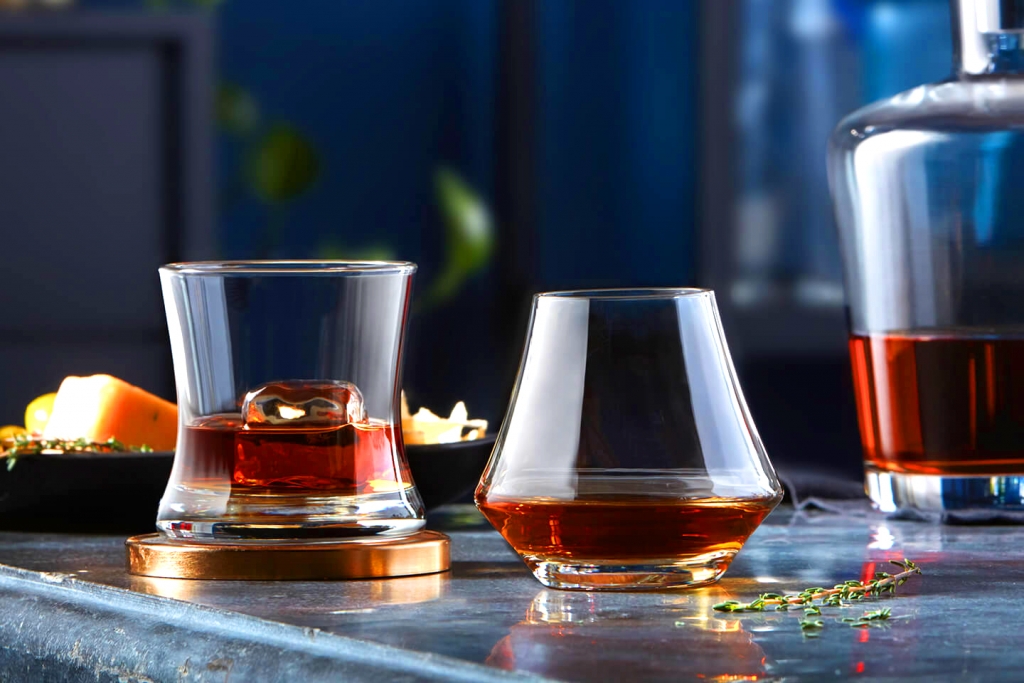
It’s All About the Glass
The first step to any tasting is to acquire the perfect tasting glass. When tasting bourbon, your observations will be hindered or enhanced depending on the shape of your glass. Although rocks glasses are perfect for some serious drinking, they don’t work for tastings. Instead, opt for a more tulip-shaped glass with a small base; Your drink will be easily maneuverable, easier to grip, and viewable from different angles.
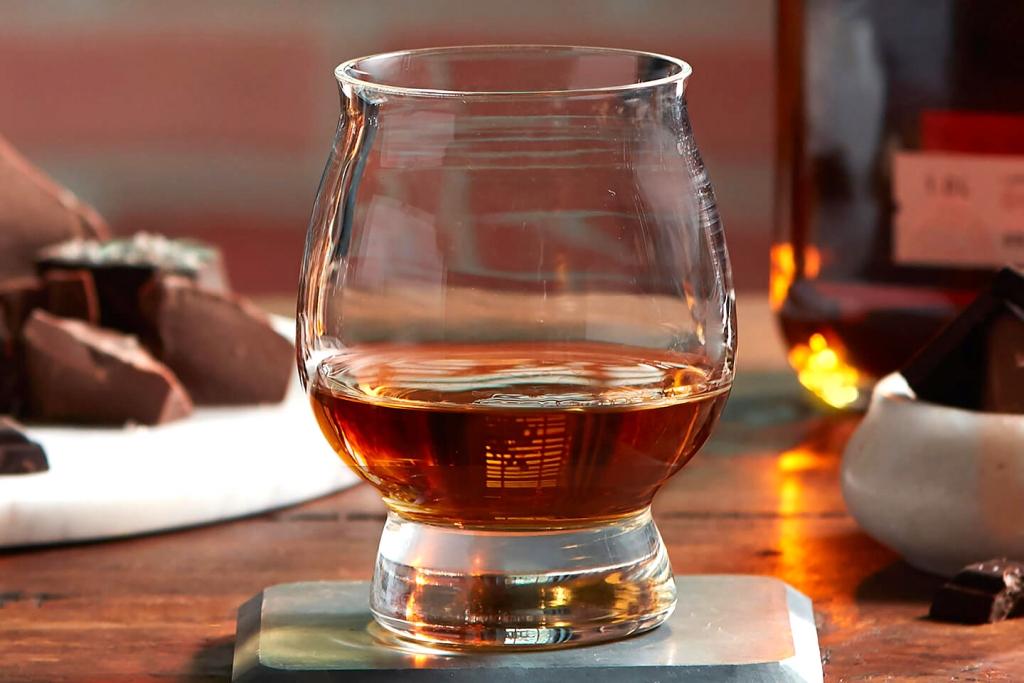
The shape of the body should be bulbous rather than straight, for excellent swirling. Lastly, the neck of a rock’s glass is far too wide. Look for a tasting glass with a narrow neck and a flared rim. A narrow neck and flared rim showcases aromas and provide the taster with the best opportunity to deeply explore bourbon’s natural fragrance.
Appearance
Once you’ve acquired a suitable tasting glass, it’s time to pour a finger width of bourbon and study its appearance. A well-trained eye can decipher age, proof strength, and a distillery’s filtration method simply by examining appearance. For instance, the longer a bourbon has matured in its oak barrel, the more it presents as a dark, rich, amber color. It helps to swirl the spirit around and hold it up to the light for a better, more encompassing view.
Beginners should make sure to take note of the bourbon’s clarity and intensity of color. Clarity ranges from clear to hazy, while intensity ranges from light to opaque.
Aroma
Well-trained tasters consider aroma to be the most important step. As we’ve established, the best way to experience bourbon’s nuanced aroma is with a proper tasting glass. Similar to a wine tasting, aerate the bourbon by swirling it around in its glass. Put your nose to the glass, or even in the glass, and observe. One important tip to remember is to experience the scent with your lips parted. If your mouth is closed, the smell of alcohol dominates the aroma and the bourbon’s complex history is easily shrouded.
Beginners should differentiate aroma groups. Does it emit a sweet smell? Or perhaps it is floral or fruity? Other common aromas include spiced, wooded, and grainy scents.
Taste
The best way to taste bourbon is through the “Kentucky Chew” method. After taking a mouthful of bourbon, use a chewing motion to coat your tongue with the spirit. The entire tongue must be coated so that all taste receptors or “tasting zones” are equally represented. Flavors present differently depending on if the liquid is concentrated on the front of the tongue (sweet), middle (salty), or back (bitter).
Beginners should take note of sweetness, texture, and flavor intensity. For instance, is the taste dry, sweet, or somewhere in the middle? Does the texture feel smooth, rough, or watery? Is the flavor neutral or pronounced?
Pro Tip – Add a tiny drop of water to aerate the aromas and flavors even more. Most importantly, this water must be distilled: Iron found in non-distilled water ruins the taste.
Finish
The finish examines the different tastes and sensations left after swallowing. A short finish means the taste dissipates quickly. A long finish means flavors linger with the taster.
Beginners should take note of the length of the finish as well as any new flavors that present themselves. Additionally, take note of the complexity level of those flavors.
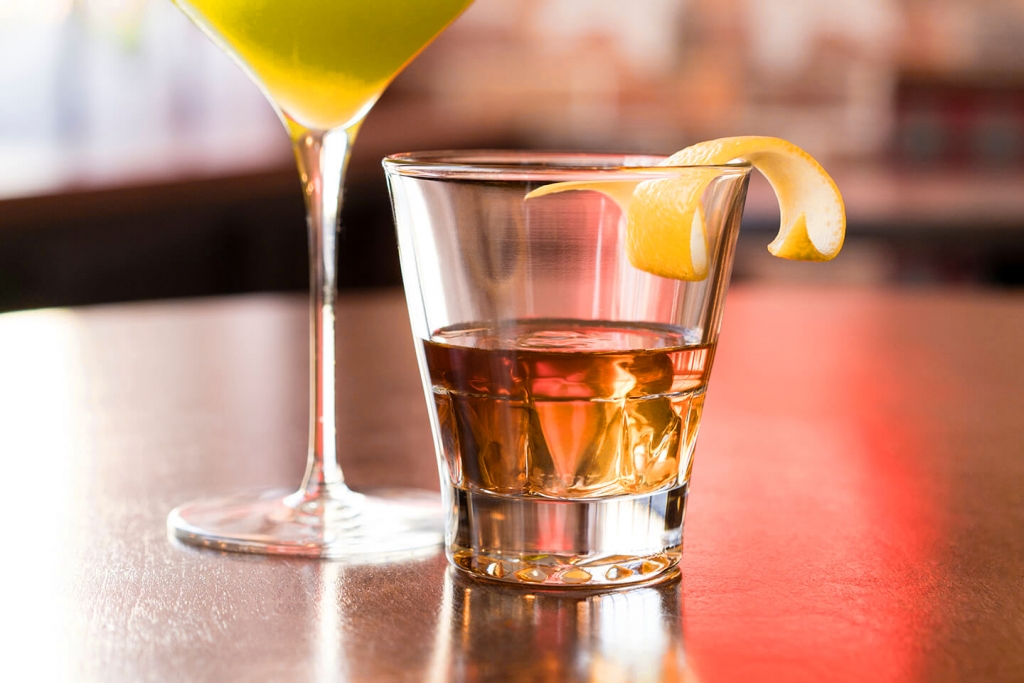
How to Drink Bourbon
There are no hard and fast rules when it comes to drinking bourbon. Experts and novice bourbon drinkers alike, however, generally have a preferred consumption method that they’ve found through trial and more trial . These methods range from simple to experimental and include:
- Neat – straight bourbon, no ice, water, or mixer
- On the rocks – chilled bourbon with ice cubes
- With water – a drop of distilled water brings out flavors, while a larger amount tames the bourbon for inexperienced drinkers
- Mixed – bourbon cocktails. Examples of famous bourbon cocktails include the Mint Julep, Manhattan, and Old Fashioned.
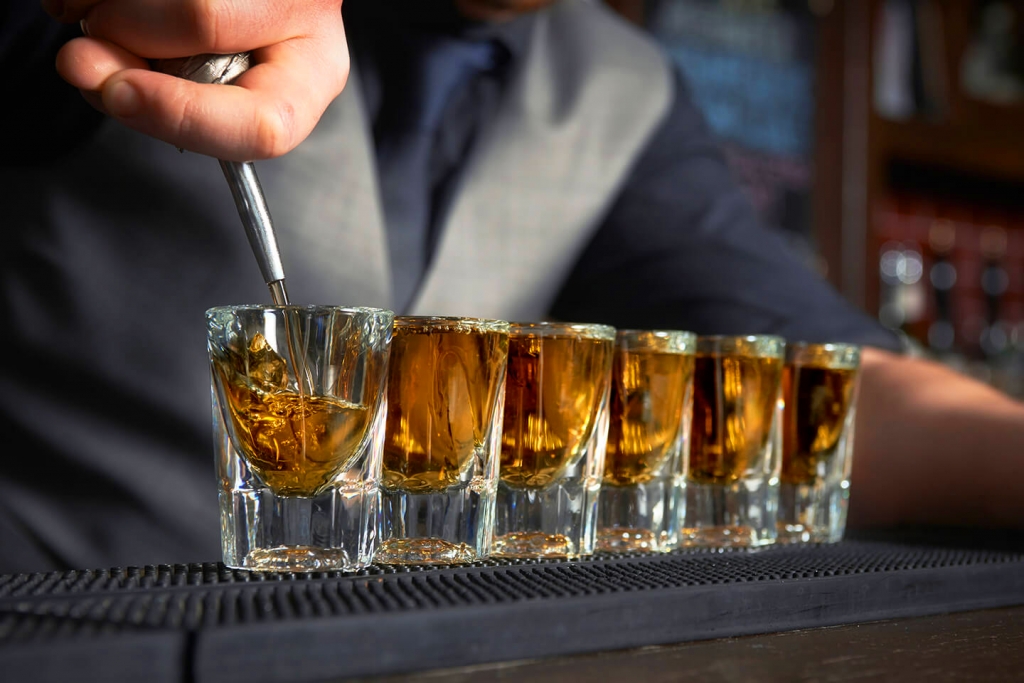
Sharing a Great American Pastime
Whether tasting in a distillery tour or enjoying a glass at your favorite bar, bourbon is both a drink and a hobby. Restaurant and tavern owners who want to provide the best drinking experience for their customers can impress connoisseurs by presenting their whiskey wares in proper tasting and drinking glasses. Doing so enhances the flavor of your customer’s drinks, while participating in the time honored traditions surrounding one of America’s favorite spirits.
Shop All Libbey Glassware »

Wherever there’s a celebration, there’s Libbey. We help foodservice professionals create unforgettable moments with glassware, tableware and flatware known worldwide for their style, selection and durability.
Since 1818, Libbey has been celebrated for its artistry and innovation in glassmaking. We rank as the top glassware manufacturer in the Americas and one of the largest tableware suppliers in the world, with products unparalleled in craftsmanship and beauty.

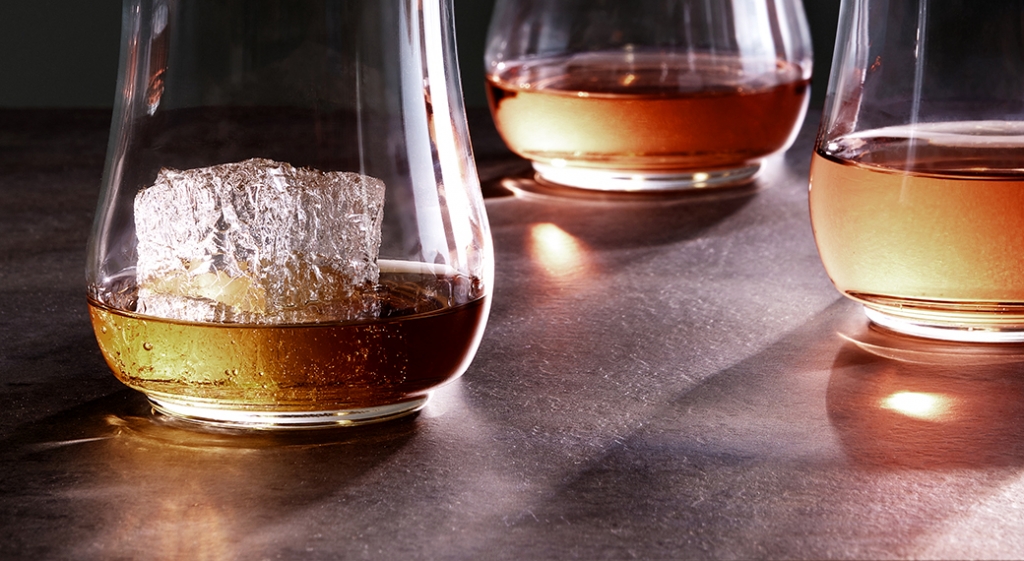


Unsealed Truth: Are You Supposed to Sip Bourbon?